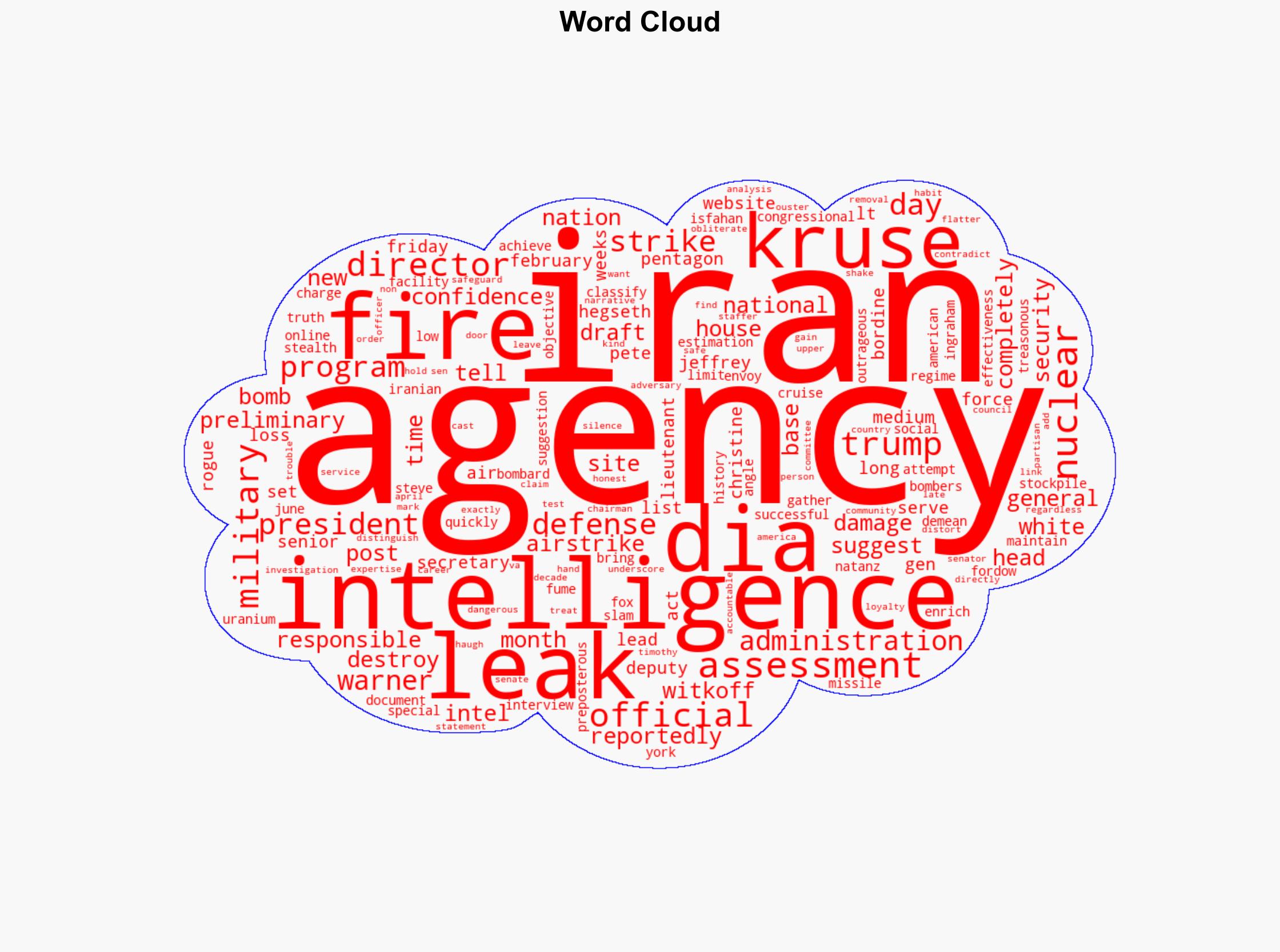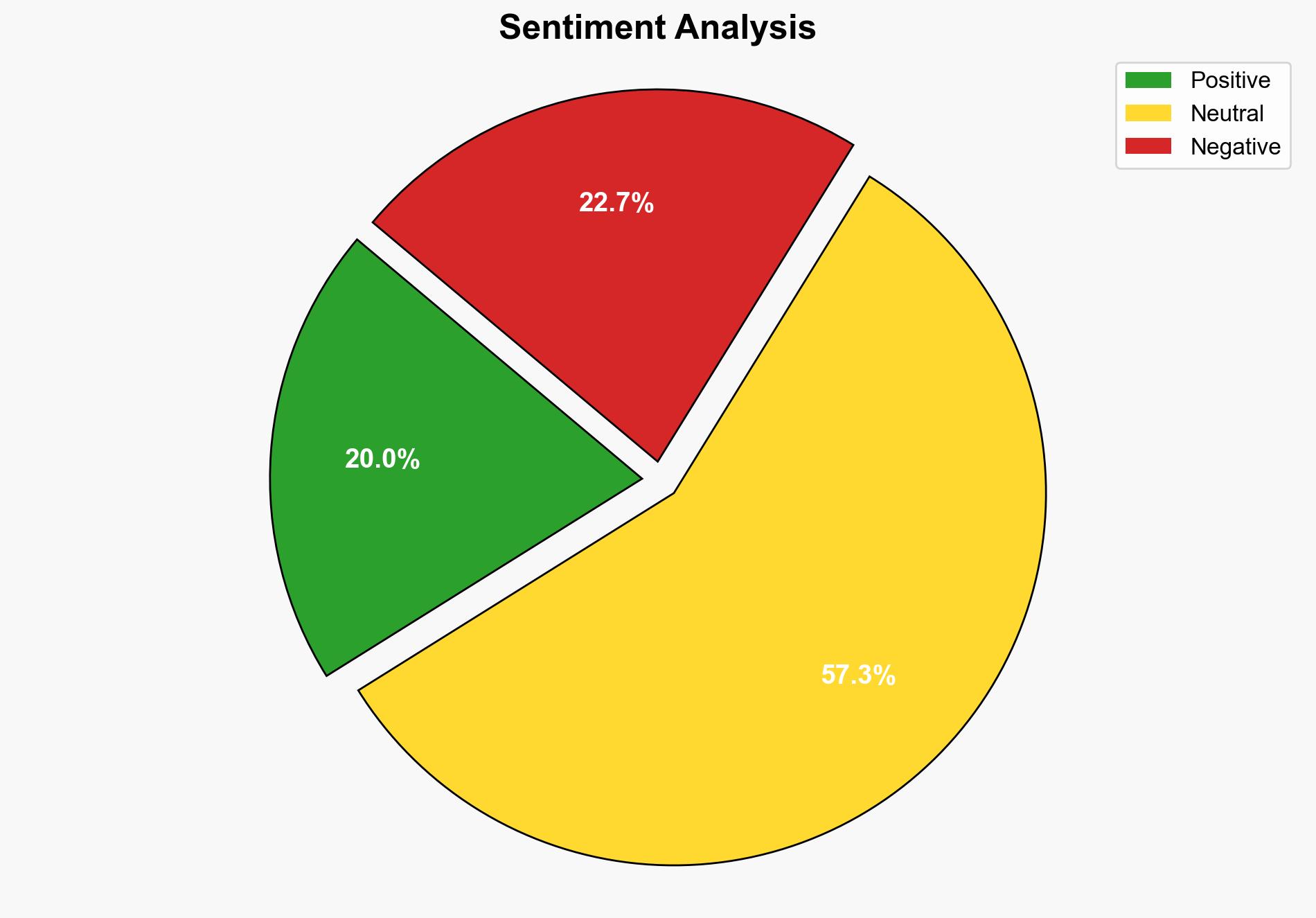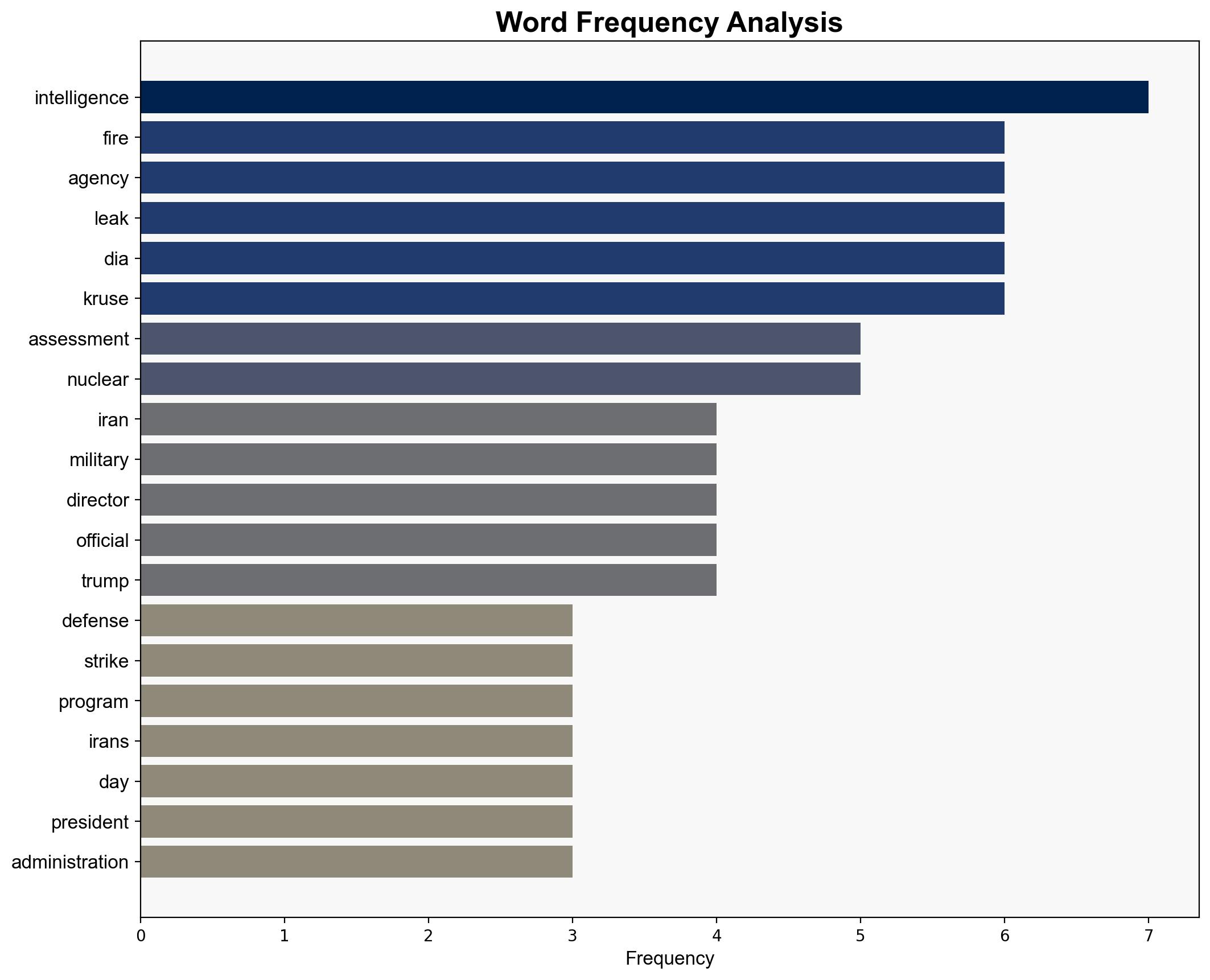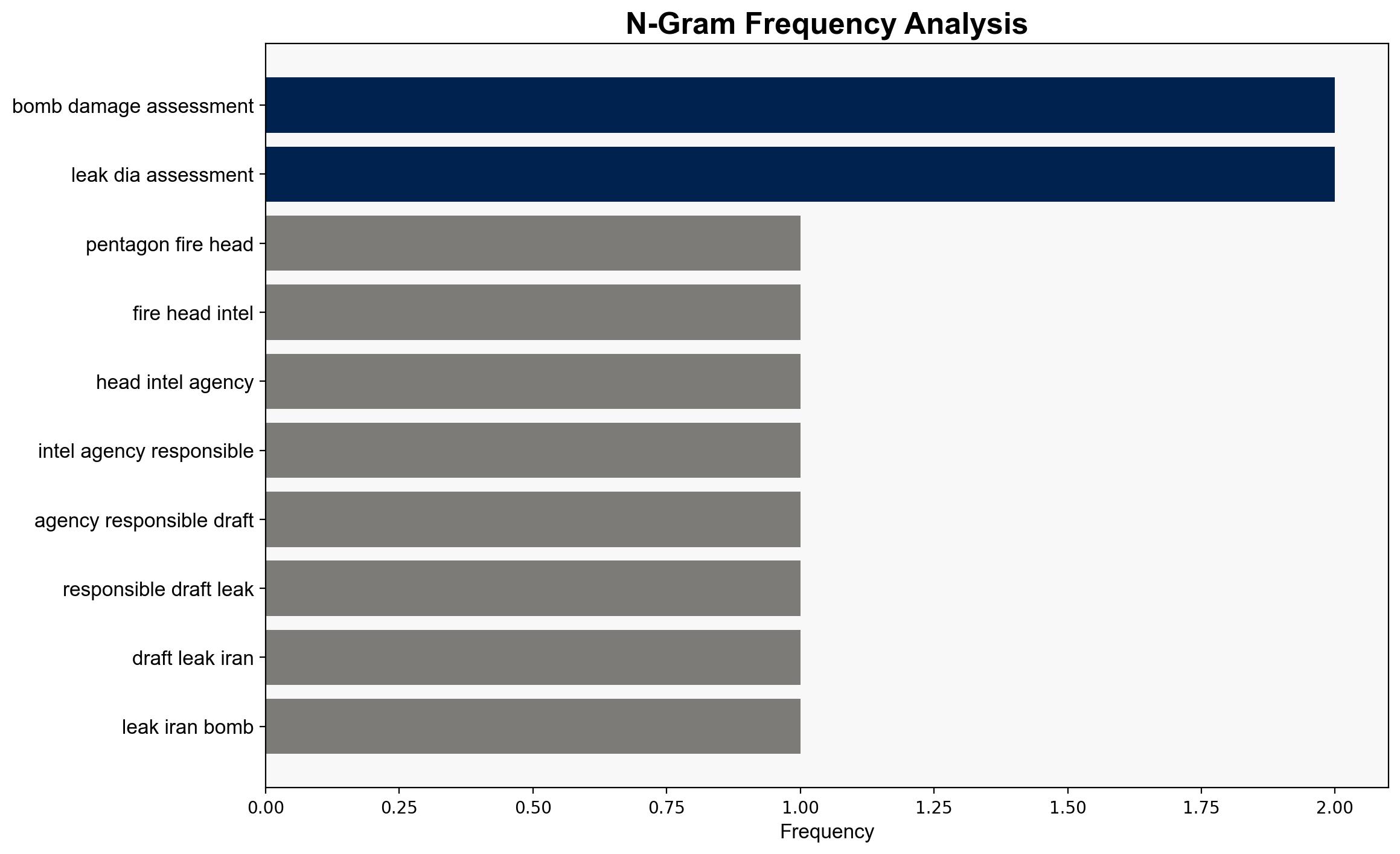Pentagon fires head of intel agency responsible for drafting leaked Iran bomb damage assessment – New York Post
Published on: 2025-08-23
Intelligence Report: Pentagon fires head of intel agency responsible for drafting leaked Iran bomb damage assessment – New York Post
1. BLUF (Bottom Line Up Front)
The firing of the head of the Defense Intelligence Agency (DIA) following a leaked assessment on Iran’s nuclear facilities suggests internal discord within U.S. intelligence and defense circles. The most supported hypothesis is that the firing was politically motivated to align intelligence narratives with administration goals. Confidence Level: Moderate. Recommended action includes enhancing internal security protocols and ensuring intelligence assessments remain unbiased and independent.
2. Competing Hypotheses
1. **Hypothesis 1**: The firing was a direct response to the leak of the bomb damage assessment, which contradicted the administration’s narrative on the effectiveness of the strikes on Iran’s nuclear facilities. This hypothesis is supported by the timing of the firing and the administration’s public statements.
2. **Hypothesis 2**: The firing was part of a broader strategy to replace key intelligence officials with those more aligned with the administration’s views, irrespective of the leak. This is supported by the pattern of recent high-profile dismissals within the intelligence community.
Using Analysis of Competing Hypotheses (ACH), Hypothesis 1 is better supported due to the direct link between the leak and the firing, as well as public statements from administration officials expressing dissatisfaction with the leak.
3. Key Assumptions and Red Flags
– **Assumptions**: It is assumed that the leak was unauthorized and damaging to the administration’s narrative. It is also assumed that the DIA’s assessment was accurate and unbiased.
– **Red Flags**: The timing of the firing raises questions about potential political motivations. The lack of transparency regarding the decision-making process is a concern.
– **Blind Spots**: There is limited information on internal deliberations within the DIA and the broader intelligence community, which could provide context for the firing.
4. Implications and Strategic Risks
The firing could lead to a chilling effect within the intelligence community, discouraging honest assessments that contradict political narratives. This may undermine the credibility of future intelligence reports. Additionally, it could embolden adversaries by suggesting internal discord and politicization of intelligence.
5. Recommendations and Outlook
- Enhance security measures to prevent unauthorized leaks and ensure the integrity of intelligence assessments.
- Promote transparency and accountability in intelligence operations to maintain credibility.
- Scenario Projections:
- Best Case: Strengthened internal protocols lead to more secure and credible intelligence operations.
- Worst Case: Continued politicization results in compromised intelligence assessments and strategic missteps.
- Most Likely: Short-term internal adjustments with ongoing scrutiny of intelligence practices.
6. Key Individuals and Entities
– Jeffrey Kruse
– Christine Bordine
– Pete Hegseth
– Steve Witkoff
– Mark Warner
7. Thematic Tags
national security threats, intelligence community, political influence, Iran nuclear program




